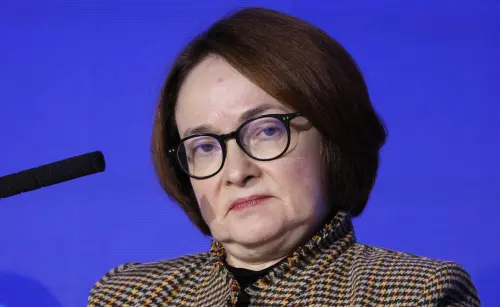Russian Central Bank Governor Elvira Nabiullina and her deputy, Alexei Zabotkin, held a news conference following the decision to maintain the key interest rate at 21%.
Nabiullina stated that they considered two signaling options: neutral and moderately tight. A rate hike could be on the table if disinflation does not progress as anticipated.
Preliminary data indicates that investment activity in the first quarter of 2025 remains stable compared to the fourth quarter of 2024, suggesting no decline in investment activity. Although there is a shift in investment plans, they believe investment activity will stay relatively high, primarily funded by companies' own resources rather than loans. The financial results for companies have shown considerable profit in recent years, and they continue to encourage businesses to engage more actively in the capital market to explore both non-bank debt financing and equity financing.
Credit growth has significantly slowed compared to the previous year, and there is considerable noise in the data. Confidence in the sustainability of corporate lending trends will only be possible after assessing second-quarter data.
The decision regarding the key rate did not factor in potential improvements in foreign trade terms and reduced import acquisition costs, which could result from a hypothetical return of brands. Such improvements may have disinflationary effects, but only if both imports and exports increase. If imports rise without corresponding export growth, it could weaken the rouble, leading to price increases.
For the exchange rate to impact significantly, it must exhibit a stable trend, which is premature to discuss at this time. The effects on the budget will require analysis of cumulative impacts on revenues and expenditures. A strengthening rouble, all other things being equal, tends to be disinflationary. If the rouble appreciates steadily, it might lead to a softening of monetary policy and lower interest expenses for the budget, necessitating an analysis of the different channels influencing the budget.
Currently, there are no evident risks in the financial stability tied to the growing demand for government bonds, as this demand spans a wide range of market participants, including banks and institutional investors. The interest in these bonds is driven not just by geopolitical expectations but also by the first signs of slowing inflation.
Despite discussing this interest broadly, reliable data to demonstrate its manifestation is lacking. Notable factors such as differential rates and yield differences for Russian assets exist, yet capital flow limitations and sanctions hinder this interest's realization. The situation will be monitored closely.
The exchange rate does influence inflation expectations, but these expectations do not follow the exchange rate automatically. Current exchange rate volatility, partly due to sanctions, has surpassed levels seen in 2022, complicating efforts to reduce inflation expectations. However, it is emphasized that lower inflation fosters a more stable exchange rate; thus, achieving sustainably low inflation will contribute to exchange rate stabilization.
The bank did not discuss a rate cut today; such consideration will only begin once there is confidence that inflation is declining steadily and at a pace that enables a return to the 4% target by 2026.
While current inflationary pressure appears to be decreasing, it is influenced by both persistent and temporary factors. Vigilance is required to ensure a consistent decline in inflation. Should the noted pro-inflationary risks materialize, a rate increase might be necessary. The expected average key rate range for 2025 remains between 19% and 22%.
